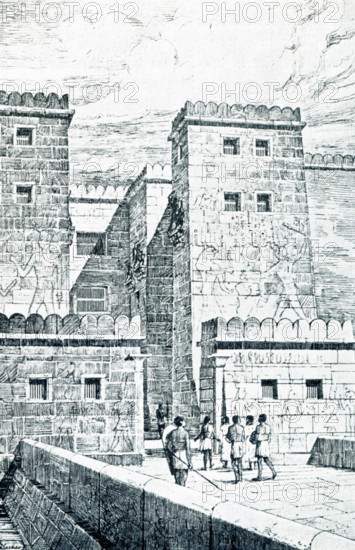
Légende
This early 1900s illustration of the main gate at Medina Habu is credited to German archaeologist Uvo Holscher. Medinet Habu is the mortuary temple of the Egyptian 20th Dynasty pharaoh Ramesses III (c. 1150 B.C.) on the West Bank of ancient Thebes (present-day Luxor). Pictured here is the First Pylon. A pylon is a Greek term and refers to a monumental door or gate built in front of an Egyptian temple. It consisted of two towers with an entrance between them. This pylon is 63 meters long and has four niches for flagstaffs. The reliefs and inscriptions tell of Ramesses military victories over the Asians and Libyans. The relief figures on the tower at right show Ramses smiting an enemy. Ramesses is also spelled Ramses and Rameses.
Crédit
Photo12/Universal Images Group
Notre référence
UMG25A01_300
Licence
Droits gérés
Format disponible
52,7Mo (2,5Mo) / 29,2cm x 45,2cm / 3450 x 5343 (300dpi)